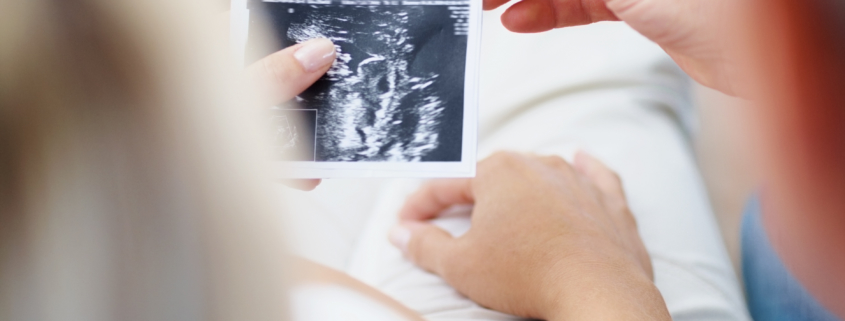Pregnancy is a fascinating biological process, very complex and a very special experience for the mother-to-be.
But what exactly happens in the first weeks, in the first three months of pregnancy?
What happens in the first two weeks of pregnancy?
It all starts with the fertilization of the egg by a male sperm.
Only one sperm out of around 30 to 100 million makes it!
After fertilization, the egg cell divides several times, creating a cluster of cells that travels through the fallopian tubes into the uterus.
The egg cell and the early cluster of cells are so small that they are barely visible to the naked eye.
Fertilization and implantation
There in the uterus, the early cluster of cells divides: The first part nests in the
3rd or
The first part nests in the uterine wall in the 3rd or 4th week of pregnancy and from then on forms the egg membranes, the placenta, the amniotic fluid and the yolk sac.
The embryo develops from the other part.
Even at this very early stage (second to fifth week), the important foundations for the spinal cord are laid.
The folate level in the mother’s blood must be sufficiently high at this time to minimize the risk of spinal cord maldevelopment (e.g. sipna bifida)(more here on folate and folic acid).
Some cells also produce more of the pregnancy hormone pregnancy hormone HCGwhich informs the ovaries and the pituitary gland of the pregnancy.
The HCG also causes the ovaries to produce more progesterone than usual.
The lining of the uterus is thus preserved and is not broken down and excreted during menstruation.
Immediately after implantation in the uterine lining, the cell cluster becomes two adjacent cell layers; they are called two-leaf germinal disk called the two-leaf germinal disk.
The two-leaf germinal disk finally divides into the epiblast and into the hypoblast.
From the epiblast all fetal tissues and therefore almost all organs develop: nervous system, sensory organs, skin, vertebral bodies, skeletal muscles, liver, gall bladder, pancreas and so on.
From the fifth week of pregnancy
The heart begins to beat in the 5th week of pregnancy, and a week later the heartbeat can also be seen on the ultrasound image.
In the 12th week of pregnancy, the fetus is about 6 cm long and weighs 15 g; its heart beats 120-160 times per minute.
Interesting note: Doctors and midwives calculate a pregnancy from the first day of the last menstruation.
However, because ovulation and fertilization of the egg only took place around two weeks later, the growing child is also two weeks younger than the number of calculated weeks of pregnancy.
The mother’s body initially shows no external signs of pregnancy.
Around the
5 weeks of pregnancy, however, menstruation finally stops.
This is when the first physical changes occur, such as a feeling of tension in the breasts and nausea.
6 weeks, the breasts become larger and more sensitive.
Important: If you only start taking folic acid now, you are too late to minimize spinal cord damage!)
From the seventh week of pregnancy
The uterus gradually grows.
The muscles and connective tissue become looser and the mother’s body is better supplied with blood.
Characteristic signs of pregnancy become apparent from the 7th week of pregnancy at the latest.
Tendons and ligaments become softer and more elastic, and the growing uterus presses on the bladder so that the woman has to go to the toilet more often.
The metabolic changes lead to increased fluid retention in the cells and the characteristic nausea and tiredness.
The hormone MSH (melanocyte stimulating hormone) changes the skin pigmentation on the nipple, on the abdominal wall, on the face and in the pubic area.
Moles and freckles can become darker as a result.
This post is also available in: French German Italian Spanish Portuguese (Portugal) Dutch Swedish Arabic Turkish Bosnian














